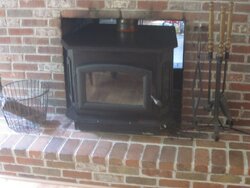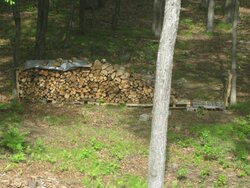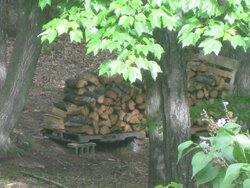Hi all. I'm looking for some advise on a basement install of a Buck Stove model 85 in my new house. I'm planning to do a Class A stainless steel double wall chimney, but don't know enough about the clearances that I need from certain things. I've got a walkout basement and I've attached pics of both the side of the house and back as well as corresponding pics of the interior of the basement.
Considerations that I have are as follows:
Windows
Propane tank for stove and oven located under the back deck and line entering the house (visible on the back wall of the basement embedded in the drywall.
Exhaust vent for stove. (upper left corner of basement window)
Interior basement partition wall (located just to the left of the cross country skis)
Exterior door located under the screened in porch in the lower left corner of the back of the house.
I'd like to put the stove in the larger part of the basement. We have all hardwood floors on the first floor so the heat should radiate up through the floors nicely. Any advise on clearances to the above obstacles as well as recommendations as to how to set myself up for success are all welcomed. Thanks in advance for your replies.
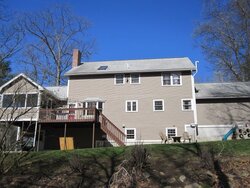
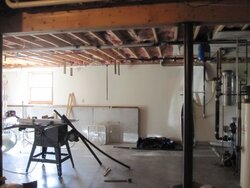
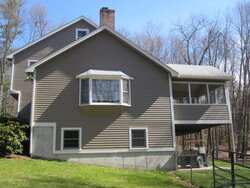
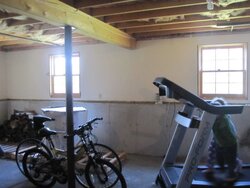
Considerations that I have are as follows:
Windows
Propane tank for stove and oven located under the back deck and line entering the house (visible on the back wall of the basement embedded in the drywall.
Exhaust vent for stove. (upper left corner of basement window)
Interior basement partition wall (located just to the left of the cross country skis)
Exterior door located under the screened in porch in the lower left corner of the back of the house.
I'd like to put the stove in the larger part of the basement. We have all hardwood floors on the first floor so the heat should radiate up through the floors nicely. Any advise on clearances to the above obstacles as well as recommendations as to how to set myself up for success are all welcomed. Thanks in advance for your replies.







 . It looks like there is insulation in between the ceiling joists so the odds of that happening are even slimmer. How will the heat convect upstairs is important, as is basement wall insulation. Is there a stairway to the first floor in the large area? Are you prepared to insulate the walls?
. It looks like there is insulation in between the ceiling joists so the odds of that happening are even slimmer. How will the heat convect upstairs is important, as is basement wall insulation. Is there a stairway to the first floor in the large area? Are you prepared to insulate the walls?![IS-nlx80d3kas7x[1].jpg](/talk/data/attachments/100/100521-26368c72c5a4fe645186d2c139eb44f5.jpg)
